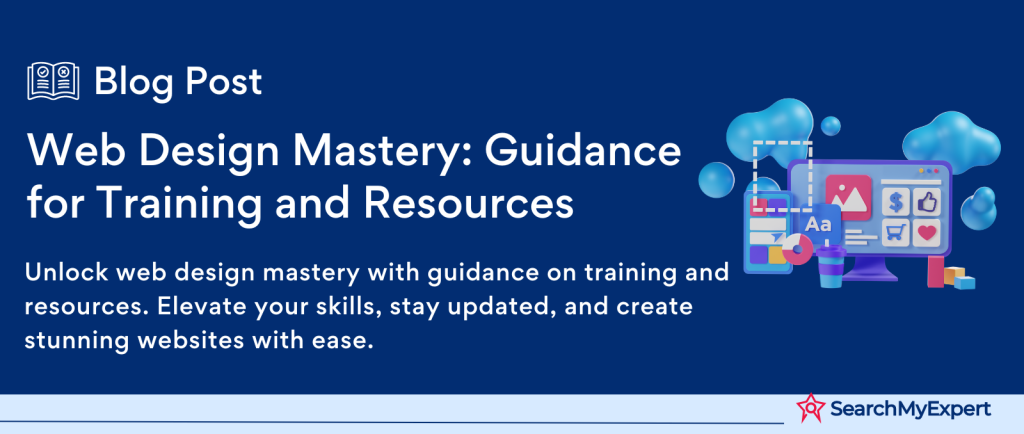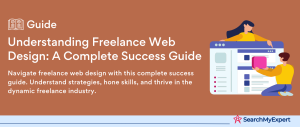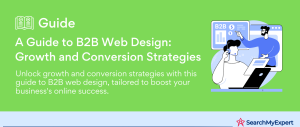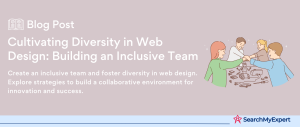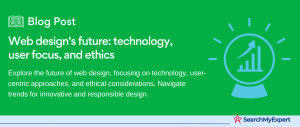Web Design: A Gateway to Digital Mastery
Introduction to Web Design
Web design – it’s an art, it’s science, it’s the face of the digital age. Imagine the internet as a bustling metropolis. Each website? A unique building. And web designers? They are the architects. But what exactly is web design? It’s more than just a pretty facade. It’s about creating functional, user-friendly, and visually appealing spaces in the digital world. In today’s hyper-connected era, web design isn’t just important; it’s indispensable.
The Digital Canvas: Importance of Web Design
Web design is the heartbeat of the digital realm. It’s how businesses connect with customers, how information is shared, and how the digital landscape remains vibrant and ever-evolving. A well-designed website is like a well-oiled machine – efficient, user-friendly, and effective. It’s about creating an experience, not just a webpage. From aesthetics to usability, web design dictates how we interact with the digital world. It’s a blend of creativity and technical prowess, a marriage of art and science.
The Artisans of the Web: Career and Earnings
Dreaming of a career in web design? You’re looking at a realm of immense potential. As businesses continue to migrate online, the demand for skilled web designers is skyrocketing. This isn’t just a job; it’s a career with longevity and growth. And the paycheck? As diverse as the field itself. Freelancers, full-timers, agency hotshots – there’s a slice of the pie for everyone. The more skilled you are, the bigger your slice.
The Toolbox: Skills for Success
What does it take to excel in web design? A fusion of creativity and technical skill. You’ll need an eye for aesthetics – color, layout, typography. But it’s not all about beauty. Usability, functionality, responsiveness – these are the pillars of great design. Then there’s the tech side – HTML, CSS, JavaScript. And let’s not forget soft skills like communication and problem-solving. It’s a diverse toolkit, but every tool is essential.
Identifying Your Learning Style
The Learning Spectrum
We all learn differently. Some of us are visual learners, craving images and spatial understanding. Others learn by listening, absorbing information through auditory means. Then there are kinesthetic learners, who grasp concepts best by doing, by engaging physically. And of course, reading/writing learners, who thrive on words and text. Understanding your learning style isn’t just beneficial – it’s crucial for your journey in web design.
Tailoring Your Training
Once you’ve pinpointed your learning style, it’s like having a map in an unfamiliar city. You can navigate the vast landscape of web design training more effectively. For visual learners, video tutorials and design software with graphical interfaces are a godsend. Auditory learners might find podcasts or recorded lectures more beneficial. Kinesthetic learners? Get hands-on with coding exercises and interactive platforms. And for those who prefer reading/writing, there’s a wealth of books, articles, and online documentation.
The Right Resources
- Visual Learners:
Platforms like YouTube or Skillshare offer comprehensive video tutorials on web design. - Auditory Learners: Podcasts such as ‘ShopTalk’ or ‘The Web Ahead’ delve deep into design concepts.
- Kinesthetic Learners:
Codecademy or FreeCodeCamp provide interactive coding exercises. - Reading/Writing Learners:
Books like “Don’t Make Me Think” by Steve Krug, or online resources like W3Schools cater to text-based learning.
Choosing the Right Training Path in Web Design
Navigating the Learning Landscape
Embarking on the journey of learning web design is akin to setting sail in a vast ocean of information and skill. There are multiple routes you can take, each with its unique characteristics. Let’s explore the main avenues: online courses, bootcamps, self-directed learning, and degree programs. Your choice will depend on your personal goals, circumstances, and learning style.
Online Courses
What Are They? Online courses are structured programs available on the internet, often created by universities, industry professionals, or educational platforms.
- Pros: Flexible, often self-paced, and covers a broad range of topics. Ideal for those balancing learning with other commitments.
- Cons:
Less personalized attention. The onus is on the learner to stay motivated and disciplined. - Best For:
Individuals seeking a balance between structure and flexibility.
Bootcamps
What Are They? Intensive training programs, usually spanning a few weeks to several months, focusing on practical, job-ready skills.
- Pros:
Highly immersive and focused on current industry standards. Often includes career support and networking opportunities. - Cons: Can be expensive and demanding, requiring a significant time commitment. The pace might be challenging for some.
- Best For: Individuals looking for a fast-paced, immersive learning experience and quick entry into the job market.
Self-Directed Learning
What Are They? A self-structured learning approach using various resources like books, online tutorials, and community forums.
- Pros:
Complete control over learning pace, style, and content. Often the most budget-friendly option. - Cons:
Requires high self-motivation and discipline. Lack of formal structure can be challenging. - Best For:
Self-motivated individuals who prefer a customized learning journey and have the discipline to maintain momentum.
Degree Programs
What Are They? Formal education programs offered by colleges and universities, culminating in a degree.
- Pros: Comprehensive curriculum, recognized qualifications, networking opportunities, and access to resources and faculty.
- Cons:
Time-consuming, often the most expensive option, and may include broader subjects beyond web design. - Best For: Those seeking a deep, comprehensive understanding of web design and related fields, and who value formal academic credentials.
Making the Right Choice
Assess Your Needs and Goals
- Time and Commitment:
How much time can you dedicate to learning? Bootcamps and degree programs require significant time, while online courses and self-directed learning offer more flexibility. - Learning Style: Do you prefer structured learning or exploring at your own pace? Your learning style can guide your choice.
- Career Goals: Are you aiming for a specific role or industry? Some paths may offer better networking opportunities or specialized training that aligns with your career aspirations.
- Budget:
Consider your budget. While self-learning can be cost-effective, formal programs often come with a higher price tag.
Seeking Guidance
- Research:
Delve into the details of each option. Look for reviews, talk to alumni, and understand what each path entails. - Mentorship and Advice: Seek advice from industry professionals or mentors. They can offer insights based on their experiences.
- Trial and Error:
Sometimes, the best way to find what works for you is through trial and error. Don’t be afraid to test different methods.
Choosing the right training path in web design is a deeply personal decision. It requires balancing your learning style, career aspirations, time availability, and financial resources. Whether you choose an online course, bootcamp, self-directed learning, or a degree program, each path offers unique advantages and challenges. The key is to align your choice with your personal goals and circumstances, ensuring a fulfilling and effective learning journey.
Top Free and Paid Web Design Resources
The Treasure Trove of Web Design Learning
Web design, a field both vast and intricate, requires a diverse set of resources to master. From the foundational coding languages like HTML, CSS, and JavaScript to the nuanced principles of design, the resources available are as varied as they are numerous. Here, we’ll explore a curated list of the top free and paid resources, ensuring you have the tools needed to excel in the world of web design.
Free Resources
W3Schools
- What: A comprehensive learning platform for web development languages.
- Features:
Interactive tutorials on HTML, CSS, JavaScript, and more.
Codecademy
- What: An interactive platform offering free coding lessons.
- Features:
Hands-on exercises in HTML, CSS, JavaScript, and more.
Mozilla Developer Network (MDN)
- What: A rich resource for web development knowledge.
- Features: Detailed documentation, tutorials, and guides on web standards.
Coursera (Audit Courses)
- What:
Offers courses from universities and colleges, with the option to audit for free. - Features: Courses in web design, UX/UI, and related fields.
GitHub
- What: A platform hosting a plethora of open-source projects.
- Features: Opportunities to learn from real-world projects and collaborate.
Paid Resources
Udemy
- What:
A vast marketplace for learning and teaching online. - Features:
Courses on web design, front-end development, and more.
Lynda/LinkedIn Learning
- What: Professional online courses, now part of LinkedIn Learning.
- Features: Expert-led courses covering a wide range of web design topics.
Treehouse
- What: An online technology school offering courses on web design and development.
- Features: Interactive coding challenges and video-based learning.
Pluralsight
- What:
Tech-focused online learning platform. - Features: In-depth courses on web development, design, and more.
A Book Apart
- What:
Publisher offering detailed books on web design and development. - Features: In-depth coverage of specific topics like CSS, HTML, and design principles.
Community Resources
Stack Overflow
- What:
A community-driven Q&A site for coders. - Features:
Get answers to specific web design and development questions.
Reddit Web Design
- What:
A subreddit dedicated to web design. - Features: Discussions, advice, and sharing of resources.
Learning Specific Skills
- HTML/CSS: W3Schools, Codecademy, and MDN provide great starting points.
- JavaScript:
Explore interactive lessons on Codecademy and advanced courses on Pluralsight. - Design Principles: Lynda/LinkedIn Learning and A Book Apart offer resources on design theory and practical application.
Whether free or paid, online or offline, the resources available for learning web design are abundant and diverse. From interactive coding platforms to in-depth theoretical courses, there’s something for every aspect of web design learning. Remember, the best resource is one that aligns with your learning style, career goals, and personal interests. Dive into these resources and embark on your journey to becoming a proficient web designer!
Building a Strong Portfolio in Web Design
The Cornerstone of Your Web Design Career
A portfolio is more than a collection of work; it’s a narrative of your skills, style, and professional journey. For web designers, it’s a pivotal tool to attract potential employers or clients. It’s your visual resume, your brand, and your chance to make a lasting impression.
The Importance of a Strong Portfolio
- First Impressions Count: Your portfolio is often the first interaction a potential employer or client has with your work. A strong portfolio sets the stage for what you can offer.
- Showcase Your Skills:
It’s not just about showing what you’ve done. It’s about demonstrating your range of skills, from design to coding. - Stand Out: In the competitive field of web design, a well-crafted portfolio can be the difference between blending in and standing out.
Crafting Your Portfolio: Tips and Tricks
Selecting Projects
- Diversity is Key:
Include a variety of work – different styles, mediums, and objectives. Show your versatility. - Quality Over Quantity:
Choose projects that best showcase your skills and style. A few high-quality projects are better than numerous mediocre ones. - Personal Projects Count:
Don’t have much client work? Include personal projects that demonstrate your skills and passion.
Presenting Your Work
- Tell a Story: Each project should tell a story. What was the challenge? How did you approach it? What was the outcome?
- Focus on Results:
Highlight how your design solved a problem or improved the user experience. - Professionalism Matters:
Ensure your portfolio is well-organized, easy to navigate, and visually appealing.
Building Your Online Portfolio
- Use a Platform:
Platforms like Behance, Wix, or Squarespace offer easy-to-use templates to build a professional-looking portfolio quickly. - Custom Build: If you have the skills, build your own site. It’s a powerful demonstration of your capabilities.
- Optimize for Mobile: Ensure your portfolio looks great on all devices.
- Include a Bio and Contact Info: Make it easy for potential clients or employers to understand who you are and how to reach you.
Online Portfolio Resources
- Behance: Showcase your creative work and discover other designers.
- Wix:
Offers designer-made templates and drag-and-drop customization. - Squarespace: Known for its sleek designs and intuitive interface.
- WordPress: For those who want more control and customization.
- Adobe Portfolio:
Free with Adobe Creative Cloud, integrates well with other Adobe apps.
Your portfolio is the bridge between your skills and your career aspirations. It’s not just about what you’ve done, but how you present it. Select your best work, tell its story, and use the right platform to showcase it to the world. A strong portfolio opens doors and opportunities in the web design world. So, curate it with care, update it regularly, and watch as it paves the way for your success.
Networking and Community Building in Web Design
The Connective Web of the Design World
In the realm of web design, your network is your net worth. Networking isn’t just about building contacts; it’s about building relationships that foster growth, learning, and opportunities. It’s a web of connections that can lead to new projects, collaborations, and insights into the industry’s latest trends and best practices.
The Power of Networking
- Knowledge Exchange: Networking allows you to exchange knowledge with peers and learn from their experiences.
- Career Opportunities:
Many job openings in the design world aren’t advertised but filled through networks. - Collaborative Growth: Building relationships with other designers can lead to collaborations, enhancing your skills and portfolio.
Building Your Network: Strategies and Platforms
Attending Industry Events
- Research Events: Look for conferences, workshops, and seminars relevant to web design.
- Be Prepared:
Have your business cards, portfolio, and elevator pitch ready. - Engage Actively: Don’t just attend; participate. Join discussions, ask questions, and share your insights.
Joining Online Communities
- Social Media: Platforms like LinkedIn, Twitter, and Instagram are great for connecting with industry professionals.
- Design Forums:
Sites like Dribbble or Behance not only let you showcase your work but also connect with other designers. - Web Design Blogs and Websites: Commenting and engaging with content on sites like Smashing Magazine can also build connections.
Collaborating With Others
- Start Small:
Collaborate on small projects or challenges with peers. - Contribute to Open Source: Engaging in open-source projects can be a great way to collaborate and learn.
- Join Design Challenges: Online challenges and hackathons are great for meeting and working with other designers.
Tips for Effective Networking
- Be Genuine:
Authenticity is key. Genuine interest and curiosity in others’ work and insights go a long way. - Follow Up:
After meeting someone, follow up with a brief message recalling your conversation and expressing interest in staying in touch. - Give More than You Take: Offer help, advice, or resources when you can. Networking is a two-way street.
Online Networking Platforms
- LinkedIn: For professional connections and industry news.
- Dribbble: A community for showcasing and discovering creative work.
- Meetup: Find local groups and events related to web design.
The Ripple Effect of a Strong Network
A well-nurtured network in the web design industry can be a catalyst for growth and opportunity. It’s about creating a supportive community where ideas and opportunities flow freely. As you grow your network, you’re not just building a list of contacts; you’re building a community that supports, inspires, and opens doors to new possibilities. The value of a strong network in advancing your career and expanding your horizons in the world of web design cannot be overstated.
Continuous Learning and Personal Growth in Web Design
Embracing the Journey of Lifelong Learning
In the ever-evolving world of web design, the learning journey never truly ends. With constant technological advancements and shifting design trends, continuous learning is not just a recommendation; it’s a necessity. It’s about staying relevant, innovative, and at the top of your game.
The Fluidity of the Web Design Realm
- Technological Evolution: Web technologies evolve rapidly. What’s trending today might be obsolete tomorrow.
- Design Trends: Design aesthetics are continually changing. Keeping up with these trends is crucial to remain competitive.
- User Expectations: As users become more tech-savvy, their expectations for functionality and design also evolve.
Strategies for Ongoing Learning
Leveraging Online Resources
- Online Courses: Platforms like Coursera, Udemy, and Pluralsight offer courses on the latest web technologies and design trends.
- Webinars and Virtual Workshops: Convenient ways to gain new insights and learn from experts in the field.
- Blogs and Podcasts: Stay updated with the latest industry news and trends. Sites like Smashing Magazine and podcasts like ‘The Web Ahead’ are great resources.
Attending Conferences and Workshops
- Networking and Learning:
Conferences like Web Summit or Adobe MAX offer a combination of learning and networking opportunities. - Hands-On Workshops:
Participate in workshops to get practical experience with new tools and techniques. - Keynote Speeches: Gain insights from industry leaders and pioneers.
Building a Learning Community
- Online Forums: Engage in communities like Stack Overflow or Designer Hangout to share knowledge and learn from peers.
- Local Meetups:
Join local web design groups or meetups to connect with other designers in your area. - Mentorship: Either as a mentor or mentee, mentorship can be a powerful way to learn and grow.
The Importance of Self-Reflection
- Assess Your Skills:
Regularly evaluate your skills and identify areas for improvement. - Set Learning Goals:
Set clear, achievable goals for your learning and development. - Embrace Feedback:
Constructive feedback is invaluable for growth. Seek it out and take it to heart.
Resources for Skill Development
- Skillshare:
Offers creative courses, including web design and development. - A List Apart:
Provides articles and blogs on web design and development. - CreativeLive:
Hosts live online classes on creative and design topics.
Adapting to Changes
- Stay Curious: Always be on the lookout for new technologies and design approaches.
- Experiment:
Don’t be afraid to experiment with new tools and techniques in your projects. - Be Agile: Be prepared to adapt your skills and knowledge as the industry evolves.
Conclusion
As we draw the curtains on this comprehensive guide to web design, it’s clear that the journey into this field is as exhilarating as it is challenging. From understanding the basics of design and choosing the right learning path, to building a strong portfolio, engaging in effective networking, and committing to continuous learning – each step is a critical piece of the puzzle in mastering web design.
Web design is not just about creating visually appealing sites; it’s about telling a story, solving problems, and making the digital experience accessible and enjoyable for all. The landscape of web design is ever-changing, and thus, it demands agility, creativity, and a lifelong commitment to learning.
Whether you’re just starting or are a seasoned designer, there’s always room to grow and excel. The world of web design is vast and rewarding, offering endless opportunities for creativity and innovation. Dive in, keep exploring, and watch as your designs leave a lasting impact in the digital world.
Elevate your online presence with our Web Design Services.
Table of Contents
Toggle
